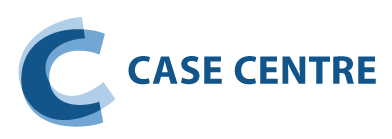


- Not connected
- |
- Login

Patreon et le financement artistique
Patreon and Arts Funding

- French,
- English
- Patreon,
- Financement artistique,
- Financement participatif,
- YouTube
- Patreon,
- Arts funding,
- Crowdfunding,
- YouTube
En 2013, le musicien Jack Conte constate qu’en tant qu’artiste qui produit des vidéos sur YouTube, il lui est difficile d’être rémunéré correctement. Ces vidéos étant accessibles à tous gratuitement, elles sont peu rentables pour le créateur, et ce, malgré la partie des revenus publicitaires générés par la vidéo qui lui est retransmise. La situation est exposée dans la section « Jack le musicien », et les étudiants sont amenés à réfléchir au problème. Cette section a été légèrement romancée (sans modifier les faits) afin d’intéresser les étudiants, mais l’histoire présentée respecte les informations utilisées pour la construction de cette étude de cas.
La section « Jack l’entrepreneur » discute du problème du financement des artistes sous un autre point de vue, celui de Jack Conte l’entrepreneur. En 2013, Jack crée une plateforme de financement participatif nommée Patreon pour répondre à ce problème. La plateforme propose aux artistes de s’adresser directement à leur base d’admirateurs pour récolter des fonds et se financer. Le concept est simple : pour chaque morceau de contenu publié par le créateur, le fan s’engage à donner automatiquement une somme convenue. En échange, le fan (ou patron) accède à des récompenses en fonction du montant donné. Dans cette seconde partie du cas, le concept de Patreon est expliqué en détail et les étudiants sont appelés à déterminer les raisons du succès de la plateforme. Ensuite, ils sont invités à formuler des recommandations marketing pour promouvoir ce concept auprès d’un plus large public.
In 2013, musician Jack Conte realized that he could not make a living by posting videos on YouTube. Although part of the ad revenues generated by videos are shared with the artist, the videos can be viewed free of charge, and the artist is paid very little. This situation is explained in the “Jack the musician” section of the case. This section has been slightly fictionalized (without changing the basic facts) to interest students, but the story told is consistent with the information used to build the case study.
The “Jack the entrepreneur” section discusses the issue of funding musicians from Jack’s perspective. In 2013, Jack created a crowdfunding platform to address this problem. Called Patreon, it allows artists to solicit donations directly from their fan base. The concept is simple: fans agree to pay a set amount, automatically charged to their credit card, for each piece of content published by the creator. In return, the fan (or patron) receives rewards according to the amount paid. In this second section of the case, the Patreon concept is explained in detail. Students must figure out the reasons for the platform’s success and recommend marketing strategies to promote this concept to a larger audience.
- Culture,
- Arts, entertainment and recreation,
- Information and cultural industries
- Financement des artistes
- Comment gagner de l’argent sur YouTube
- Financement publicitaire en ligne
- Financement participatif
- Développement d’une marque en ligne
- Différents modes de financement en ligne
- Arts funding
- How to earn money with YouTube
- Online advertising
- Crowdfunding
- Developing an online brand
- Online funding methods
Ce cas a pour objectif de faire réfléchir les étudiants à la problématique du financement des artistes et, par conséquent, aux différents modèles d’affaires possibles dans le domaine des arts. Pour cela, l’étudiant est invité à appliquer des concepts comme le ciblage et le positionnement d’un produit culturel.
Cette étude de cas a été conçue dans l’optique d’une utilisation dans des cours traitant des problématiques liées au marketing des arts et de la culture. Les cibles principales sont les cours de 2e cycle. Son objectif étant de proposer une discussion sur la question du financement des artistes, ce cas permet, d’une part, d’offrir le point de vue des artistes en tant que producteurs et autopromoteurs de contenu et, d’autre part, celui des consommateurs.
The objective of this case is to make students think about the problem of funding artists and thus various possible business models in the arts. They are encouraged to apply concepts such as targeting and the positioning of cultural products.
This case study was designed to be used in courses dealing with problems related to marketing culture and the arts – primarily at the graduate level. Since it aims to stimulate discussion about the funding of artists, it presents the perspective of artists as content producers and self-promoters, on the one hand, and of consumers, on the other.
Culture participative
Participatory culture


